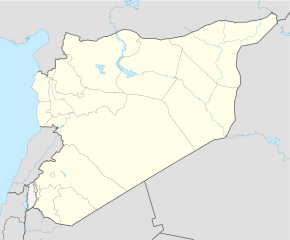7.6: Vocabulary
- Page ID
- 251251
\( \newcommand{\vecs}[1]{\overset { \scriptstyle \rightharpoonup} {\mathbf{#1}} } \)
\( \newcommand{\vecd}[1]{\overset{-\!-\!\rightharpoonup}{\vphantom{a}\smash {#1}}} \)
\( \newcommand{\dsum}{\displaystyle\sum\limits} \)
\( \newcommand{\dint}{\displaystyle\int\limits} \)
\( \newcommand{\dlim}{\displaystyle\lim\limits} \)
\( \newcommand{\id}{\mathrm{id}}\) \( \newcommand{\Span}{\mathrm{span}}\)
( \newcommand{\kernel}{\mathrm{null}\,}\) \( \newcommand{\range}{\mathrm{range}\,}\)
\( \newcommand{\RealPart}{\mathrm{Re}}\) \( \newcommand{\ImaginaryPart}{\mathrm{Im}}\)
\( \newcommand{\Argument}{\mathrm{Arg}}\) \( \newcommand{\norm}[1]{\| #1 \|}\)
\( \newcommand{\inner}[2]{\langle #1, #2 \rangle}\)
\( \newcommand{\Span}{\mathrm{span}}\)
\( \newcommand{\id}{\mathrm{id}}\)
\( \newcommand{\Span}{\mathrm{span}}\)
\( \newcommand{\kernel}{\mathrm{null}\,}\)
\( \newcommand{\range}{\mathrm{range}\,}\)
\( \newcommand{\RealPart}{\mathrm{Re}}\)
\( \newcommand{\ImaginaryPart}{\mathrm{Im}}\)
\( \newcommand{\Argument}{\mathrm{Arg}}\)
\( \newcommand{\norm}[1]{\| #1 \|}\)
\( \newcommand{\inner}[2]{\langle #1, #2 \rangle}\)
\( \newcommand{\Span}{\mathrm{span}}\) \( \newcommand{\AA}{\unicode[.8,0]{x212B}}\)
\( \newcommand{\vectorA}[1]{\vec{#1}} % arrow\)
\( \newcommand{\vectorAt}[1]{\vec{\text{#1}}} % arrow\)
\( \newcommand{\vectorB}[1]{\overset { \scriptstyle \rightharpoonup} {\mathbf{#1}} } \)
\( \newcommand{\vectorC}[1]{\textbf{#1}} \)
\( \newcommand{\vectorD}[1]{\overrightarrow{#1}} \)
\( \newcommand{\vectorDt}[1]{\overrightarrow{\text{#1}}} \)
\( \newcommand{\vectE}[1]{\overset{-\!-\!\rightharpoonup}{\vphantom{a}\smash{\mathbf {#1}}}} \)
\( \newcommand{\vecs}[1]{\overset { \scriptstyle \rightharpoonup} {\mathbf{#1}} } \)
\( \newcommand{\vecd}[1]{\overset{-\!-\!\rightharpoonup}{\vphantom{a}\smash {#1}}} \)
\(\newcommand{\avec}{\mathbf a}\) \(\newcommand{\bvec}{\mathbf b}\) \(\newcommand{\cvec}{\mathbf c}\) \(\newcommand{\dvec}{\mathbf d}\) \(\newcommand{\dtil}{\widetilde{\mathbf d}}\) \(\newcommand{\evec}{\mathbf e}\) \(\newcommand{\fvec}{\mathbf f}\) \(\newcommand{\nvec}{\mathbf n}\) \(\newcommand{\pvec}{\mathbf p}\) \(\newcommand{\qvec}{\mathbf q}\) \(\newcommand{\svec}{\mathbf s}\) \(\newcommand{\tvec}{\mathbf t}\) \(\newcommand{\uvec}{\mathbf u}\) \(\newcommand{\vvec}{\mathbf v}\) \(\newcommand{\wvec}{\mathbf w}\) \(\newcommand{\xvec}{\mathbf x}\) \(\newcommand{\yvec}{\mathbf y}\) \(\newcommand{\zvec}{\mathbf z}\) \(\newcommand{\rvec}{\mathbf r}\) \(\newcommand{\mvec}{\mathbf m}\) \(\newcommand{\zerovec}{\mathbf 0}\) \(\newcommand{\onevec}{\mathbf 1}\) \(\newcommand{\real}{\mathbb R}\) \(\newcommand{\twovec}[2]{\left[\begin{array}{r}#1 \\ #2 \end{array}\right]}\) \(\newcommand{\ctwovec}[2]{\left[\begin{array}{c}#1 \\ #2 \end{array}\right]}\) \(\newcommand{\threevec}[3]{\left[\begin{array}{r}#1 \\ #2 \\ #3 \end{array}\right]}\) \(\newcommand{\cthreevec}[3]{\left[\begin{array}{c}#1 \\ #2 \\ #3 \end{array}\right]}\) \(\newcommand{\fourvec}[4]{\left[\begin{array}{r}#1 \\ #2 \\ #3 \\ #4 \end{array}\right]}\) \(\newcommand{\cfourvec}[4]{\left[\begin{array}{c}#1 \\ #2 \\ #3 \\ #4 \end{array}\right]}\) \(\newcommand{\fivevec}[5]{\left[\begin{array}{r}#1 \\ #2 \\ #3 \\ #4 \\ #5 \\ \end{array}\right]}\) \(\newcommand{\cfivevec}[5]{\left[\begin{array}{c}#1 \\ #2 \\ #3 \\ #4 \\ #5 \\ \end{array}\right]}\) \(\newcommand{\mattwo}[4]{\left[\begin{array}{rr}#1 \amp #2 \\ #3 \amp #4 \\ \end{array}\right]}\) \(\newcommand{\laspan}[1]{\text{Span}\{#1\}}\) \(\newcommand{\bcal}{\cal B}\) \(\newcommand{\ccal}{\cal C}\) \(\newcommand{\scal}{\cal S}\) \(\newcommand{\wcal}{\cal W}\) \(\newcommand{\ecal}{\cal E}\) \(\newcommand{\coords}[2]{\left\{#1\right\}_{#2}}\) \(\newcommand{\gray}[1]{\color{gray}{#1}}\) \(\newcommand{\lgray}[1]{\color{lightgray}{#1}}\) \(\newcommand{\rank}{\operatorname{rank}}\) \(\newcommand{\row}{\text{Row}}\) \(\newcommand{\col}{\text{Col}}\) \(\renewcommand{\row}{\text{Row}}\) \(\newcommand{\nul}{\text{Nul}}\) \(\newcommand{\var}{\text{Var}}\) \(\newcommand{\corr}{\text{corr}}\) \(\newcommand{\len}[1]{\left|#1\right|}\) \(\newcommand{\bbar}{\overline{\bvec}}\) \(\newcommand{\bhat}{\widehat{\bvec}}\) \(\newcommand{\bperp}{\bvec^\perp}\) \(\newcommand{\xhat}{\widehat{\xvec}}\) \(\newcommand{\vhat}{\widehat{\vvec}}\) \(\newcommand{\uhat}{\widehat{\uvec}}\) \(\newcommand{\what}{\widehat{\wvec}}\) \(\newcommand{\Sighat}{\widehat{\Sigma}}\) \(\newcommand{\lt}{<}\) \(\newcommand{\gt}{>}\) \(\newcommand{\amp}{&}\) \(\definecolor{fillinmathshade}{gray}{0.9}\)In this section, you will be able to:
- Learn and say new vocabulary about family members.
- Recognize words used in Arabic and English (Cognates).
Vocabulary:
| Image | Meaning | Arabic | Audio |
|---|---|---|---|

|
Professor, teacher (male) (noun) |
أُستاذ |
|

|
Professor, teacher (female) (noun) | أُستاذة |
|

|
To introduce a male with no title. (noun) |
سَيِّد |
|

|
To introduce a female with no title (noun) |
سَيِّدة |
|
.jpg?revision=1&size=bestfit&width=214&height=169)
|
Refer to a young , unmarried woman | آنِسة |
|

|
Young man (noun) |
شاب |
|

|
Young lady (noun) | شابة |
|

|
Youths (noun) | شَباب |
|
.jpg?revision=1)
|
Family (immediate) (noun) | أُسرَة |
|

|
Family (extended) (noun) | عائِلة |
|

|
Drink (noun) | شَراب |
|

|
Car (noun) | سَيَّارة |
|

|
Syria ( noun) | سوريا |
|

|
Morning | صباح |
|

|
Picture (noun) |
صورة |
|

|
Number |
رَقَم Raqam |
|
Adjectives
| Image | English | Arabic | Audio |
|---|---|---|---|

|
Black | أَسْوَد |
|

|
Green | أَخْضَر |
|

|
White | أَبْيَض |
|
Cognate
| Meaning | Formal / Written |
|---|---|
| Secretary | سكرتير |
| Salad | سلطة |
| Pepsi | بيبسي |
| Cigarette | سيجارة |
| Cinema | سينما |
| Biscuit | بسكويت |
Cultural Phrases
| Image | Pronunciation | Meaning | Arabic | Audio |
|---|---|---|---|---|

|
Shukran | Thank you (noun) | شكراً |
|

|
Min Fadlak | Please (adverb) | مِنْ فَضلك |
|

|
Tafaddal |
Please come in ( for a male) |
تَفَضَّل |
|

|
Tafaddalii |
Please come in ( for a female) |
تَفَضَّلي |
|

|
Shukran | Thank you (noun) | شكراً |
|
Activities
New Verb (to study)
You will learn a new verb in the table below. The verb to study means in Arabic درس. Then, practice the verb in conversation.
| Example meaning in English | Example | English Meaning | Arabic Meaning |
|---|---|---|---|
| I study Spanish Literature. | أَدْرُسُ أَدَب إسباني | I study | أَدْرُسُ |
| We study Spanish Literature. | نَدْرُسُ أدب إسباني | We Study | تَدْرُسُ |
| Oh, Ben, do study Spanish Literature. | تَدْرُسُ أدب إسباني، يا بِنْ | You study (Masculine/ Singular) | تَدْرُسُ |
| Oh, Tina, do study Spanish Literature. | تَدْرُسين أدب إسباني، يا تينا | You study (Feminine/ Singular) | تَدْرُسين |
| You study Spanish Literature. | تَدْرُسُون أدب إسباني، يا شباب | You study (all) | تَدْرُسُون |
| John studies Spanish Literature. | يَدْرُسُ جون أدب إسباني | He studies | يَدْرُسُ |
| Rana studies Spanish Literature. | تَدْرُسُ رنا أدب إسباني | she studies | تَدْرُسُ |
| They study Spanish Literature. | جون ورنا يَدْرُسُون أدب إسباني | They (all) study | يَدْرُسُون |

